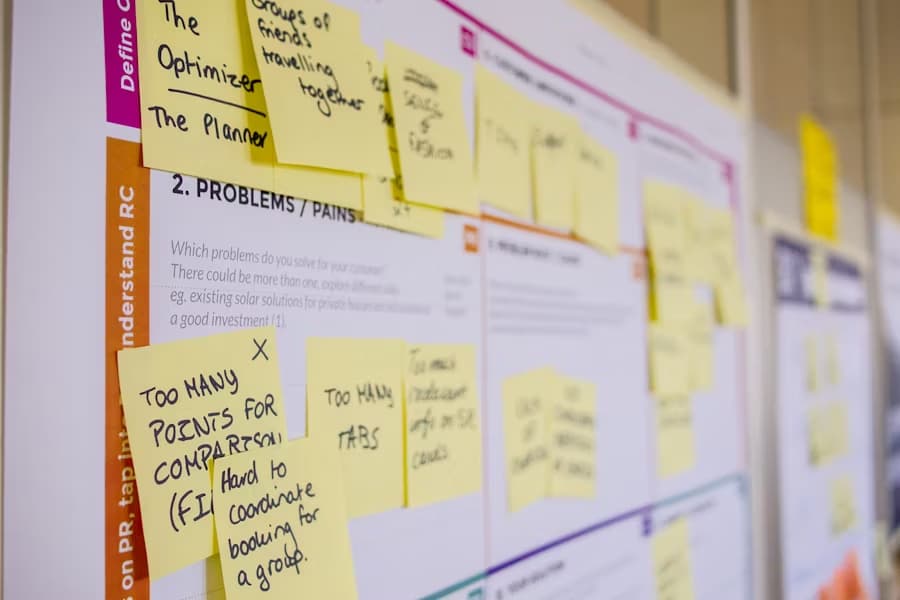Mastering the essential skill of time management is crucial for both students and employees to achieve success. Excelling in time management allows individuals to enhance productivity, avoid procrastination, and effectively prioritize their tasks. In aiding this pursuit, a time management worksheet emerges as a valuable asset. This tool is designed to facilitate the organization of tasks, efficient time allocation, and tracking of progress for both students and employees. By adopting a time management worksheet, individuals can optimize their time usage and realize their goals more seamlessly.
The blog extends an offer to its readers, providing a complimentary time management worksheet. This resource is aimed at refining the time management skills of its users, available for download with a simple click on the blog’s cover.
What Is A Time Management Worksheet?
Serving as a pivotal organizational tool, a time management worksheet offers a structured approach to tracking and managing time effectively. It typically features a layout with specified time intervals, be it hourly or daily, enabling users to list down tasks, appointments, or activities slated for completion within those periods.
The essence of a time management worksheet lies in its capacity to aid users in task prioritization and optimal time utilization. Through a visual representation of their schedules and tasks, users gain the ability to strategize their day better, sidestep potential overcommitments, and ensure critical tasks receive due attention.
Adaptable in form, time management worksheets range from straightforward tables to intricate spreadsheets or software applications, some incorporating additional functionalities like color-coding, priority assessments, or objectives establishment. Organizations are encouraged to explore automation options for employee timesheets to enhance efficiency.
How Can I Effectively Manage My Time with Time Management Worksheet?
Effective time management hinges on diligent focus, prioritization, and strategic planning. One of the most effective methods involves creating a detailed calendar or to-do list, earmarking specific time slots for each activity or task. This practice not only keeps procrastination at bay but also ensures a concentrated effort on tasks of paramount importance and urgency through effective prioritization.
Minimizing distractions, such as social media or email notifications, plays a significant role in bolstering focus and productivity. Incorporating regular breaks into one’s routine can rejuvenate energy levels, boost productivity, and prevent burnout. Flexibility is key; being prepared to adjust one’s schedule in response to unexpected events or evolving priorities is essential. By employing the above strategies, individuals can navigate their time more effectively and achieve their objectives with greater efficiency.
Exploring Five Effective Time Management Techniques
Managing time efficiently is pivotal for several reasons. Firstly, adept time management can significantly enhance productivity and expedite goal achievement. By prioritizing tasks and allotting time to specific activities, one can avoid spending time on trivial matters and maximize the utilization of available time. Secondly, mastering time management skills can alleviate stress and prevent burnout by maintaining control over work schedules and avoiding last-minute scrambles. Lastly, it aids in attaining a harmonious balance between work and personal life, enabling individuals to handle both spheres without succumbing to stress or overburden.
Outlined below are five strategic approaches to improve time management and foster a balanced work-life dynamic:
Prioritization
Prioritization is an essential skill for effective time management, helping to ensure that the most critical tasks are addressed first. Here’s how to implement prioritization effectively:
- Compile a Comprehensive Task List: Start by listing all the tasks you need to complete. This overview allows you to see everything on your plate and makes the prioritization process more manageable;
- Assess Urgency and Importance: Evaluate each task based on its urgency (how soon it needs to be done) and its importance (the impact of completing it). This assessment is crucial for the next step;
- Categorize Tasks: Using the Eisenhower Matrix, categorize tasks into four quadrants:
- Urgent and Important: Tasks that need immediate attention and have significant consequences;
- Important but Not Urgent: Tasks that are important but do not require immediate action. Planning time to address these tasks can prevent them from becoming urgent;
- Urgent but Not Important: Tasks that require immediate attention but have little long-term impact. Consider delegating these tasks;
- Neither Urgent Nor Important: Tasks that are low in urgency and importance. These should be last on your list or even eliminated.
- Allocate Time and Resources: Once tasks are categorized, allocate your time and resources to focus primarily on the urgent and important tasks, followed by important but not urgent tasks;
- Review and Adjust Regularly: Priorities can change, so it’s essential to regularly review and adjust your task list and prioritization;
- Limit Multitasking: Focusing on one task at a time can increase efficiency and ensure high-quality work. Multitasking can often lead to decreased productivity and quality;
- Use Tools and Techniques: Consider using time management tools, such as planners or digital apps, to help organize and prioritize tasks effectively;
- Set Deadlines: For important but not urgent tasks, setting deadlines can help prevent them from becoming urgent and stressful.
By focusing on prioritization, individuals can better manage their time, reduce stress, and ensure that critical tasks are completed efficiently and effectively. This methodical approach to handling tasks ensures that energy is spent on activities that align with personal or organizational goals, leading to improved productivity and satisfaction.
Time Blocking
Time blocking is a technique that involves reserving specific blocks of time for particular tasks or projects, enhancing focus and productivity. This strategy necessitates listing all pending tasks and activities, then allocating distinct time slots to each, based on their priority and urgency. To optimize productivity, eliminating distractions during these periods is crucial, which might involve closing unnecessary applications or silencing notifications. Time blocking fosters organization, concentration, and efficient use of time, minimizing multitasking and bolstering the balance between professional and personal commitments.
Delegation
Delegation is a vital skill in managing workloads efficiently and fostering a positive team environment. Here are key steps to ensure effective delegation:
- Identify Delegable Tasks: Assess your to-do list to determine which tasks can be delegated. Focus on tasks that do not require your specific expertise and can be effectively completed by someone else;
- Choose the Right Person: Select team members whose skills, experience, and workload align with the task at hand. It’s crucial to match the task with the individual’s strengths and developmental needs;
- Provide Clear Instructions: When assigning the task, be clear about your expectations, deadlines, and any specific instructions. This ensures the team member understands what is required and reduces the likelihood of misunderstandings;
- Offer Resources and Support: Make sure that the person taking on the task has access to the necessary resources and support. Be available to answer questions or provide guidance as needed;
- Empower and Trust: Give team members the autonomy to complete the task in their own way. Trusting them to make decisions fosters confidence and encourages innovation;
- Monitor Progress: While it’s important to trust your team, it’s also essential to check in periodically to monitor progress and offer assistance if needed. This helps to keep the task on track and provides an opportunity for feedback;
- Recognize and Reward: Acknowledge the efforts and achievements of your team members upon task completion. Recognition and appreciation not only boost morale but also reinforce the positive aspects of delegation;
- Learn and Adjust: After the task is completed, reflect on what went well and what could be improved. Use this insight to enhance your delegation strategy in the future.
Effective delegation not only increases productivity but also promotes skill development and job satisfaction among team members. It allows leaders to focus on high-priority tasks while building a strong, capable team. However, it’s crucial to understand its limitations and ensure that delegation is used appropriately, ensuring tasks requiring personal expertise or critical decisions remain under your purview.
Eliminating Distractions
Minimizing distractions is a method to safeguard productivity by identifying and mitigating potential distractions. Common distractions include social media, email notifications, and interruptions from colleagues. Strategies to reduce distractions involve disabling notifications, closing irrelevant applications, and setting boundaries with coworkers. By minimizing interruptions, individuals can maintain focus, enhance productivity, and make the most of their time.
Regular Breaks
Incorporating regular breaks into the workday is a strategy to boost concentration, productivity, and reduce stress levels. Here are steps to effectively integrate breaks into your schedule:
- Plan Short Breaks: Schedule short, 5 to 10-minute breaks every hour to step away from your work. This helps to clear your mind and reduces eye strain, especially for those working at computers;
- Designate Times for Longer Breaks: Allocate specific times for longer breaks, such as a 30-minute lunch break. This longer period allows your brain to rest and recharge more deeply, improving your ability to tackle complex tasks in the afternoon;
- Avoid Digital Distractions: During breaks, try to avoid digital screens and social media, as they can lead to mental fatigue rather than relaxation. Opting for non-screen activities can help your mind truly rest and decompress from the constant influx of information;
- Incorporate Physical Movement: Incorporate some form of physical activity into your breaks, such as a brisk walk outside or simple stretching exercises. Physical movement not only rejuvenates the body but also increases blood flow to the brain, enhancing cognitive function and creativity;
- Practice Mindfulness or Meditation: Even a few minutes of mindfulness or meditation can significantly reduce stress levels and improve concentration. These practices help in grounding your thoughts and focusing on the present moment, making you more prepared to tackle tasks post-break;
- Refresh with Healthy Snacks or Water: Use break times to hydrate or nourish your body with healthy snacks. Staying hydrated and eating nutritious foods can help maintain energy levels and prevent the mid-afternoon slump;
- Evaluate and Adjust: Regularly assess how your breaks are affecting your productivity and well-being. If you find that a particular strategy isn’t working, don’t hesitate to adjust your break schedule or activities. Finding what works best for you is key to maximizing the benefits of your breaks.
By thoughtfully incorporating and executing these steps, breaks can serve as essential components of a productive workday. They not only help in managing stress and preventing burnout but also in sustaining high levels of performance throughout the day. Breaks, when done right, can significantly contribute to achieving a balanced and efficient work-life dynamic, leading to improved job satisfaction and overall happiness.

Crafting a Daily Time Management Plan
A daily time management plan outlines the allocation of time to various tasks and activities throughout the day, including both professional and personal tasks. Establishing such a plan involves listing all tasks, prioritizing them based on urgency and importance, and estimating the time required for completion. Realistic scheduling, allowing for unexpected delays, and including breaks can help maintain focus and prevent burnout. Tools like planners, calendars, or digital scheduling apps can assist in creating and adjusting daily plans, ensuring a productive and organized day.
Utilizing a Weekly Time Management Log
A weekly time management log serves to monitor and manage time usage over the course of a week, detailing all tasks and the time spent on each. Creating this log involves dividing the day into time blocks and listing all weekly tasks, noting both personal and professional obligations. Tracking actual time spent on tasks compared to planned time can reveal discrepancies and areas for improvement, enhancing overall time management and productivity.
Implementing a Daily Time Management Log
Similar to its weekly counterpart, a daily time management log tracks task completion and time spent on daily activities. Organizing the day into manageable time blocks and listing tasks with estimated completion times facilitates tracking and adjustments for improved efficiency. Reviewing this log at day’s end can highlight productivity patterns and identify opportunities for better time management, ensuring effective use of time and enhanced focus on goals.
To Wrap Up
In conclusion, mastering time management strategies is crucial for achieving a harmonious balance between work and personal life, enhancing productivity, and maintaining mental health. The five strategies discussed—prioritization, time blocking, delegation, eliminating distractions, and taking regular breaks—serve as fundamental pillars for effective time management. By prioritizing tasks, individuals can focus on what truly matters, ensuring that their efforts are directed toward activities that significantly impact their goals. Time blocking aids in dedicating undivided attention to tasks, fostering a productive work environment. Delegation leverages the strengths of a team, freeing up valuable time for critical tasks. Eliminating distractions minimizes time wastage, enabling individuals to stay focused and achieve more in less time. Lastly, regular breaks are essential for mental and physical well-being, preventing burnout and keeping motivation levels high.
Incorporating these strategies into a daily and weekly time management plan provides a structured approach to tackling tasks, allowing for a more organized, efficient, and fulfilling life. As individuals become more adept at managing their time, they’ll find that they can accomplish more with less stress, enjoy higher job satisfaction, and have more time for personal interests and relaxation. Time management is not just about getting more done in less time but about enhancing the quality of life and work, making every moment count.



